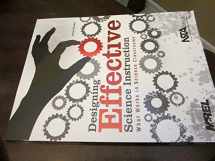
Designing Effective Science Instruction: What Works in Science Classrooms
Book details
Summary
Description
Science teachers, like all teachers, start each school year with high hopes and expectations for students to succeed. They plan their lessons, scramble to get the necessary equipment, and work hard to engage their students. However, despite good intentions and best-laid plans, not all students do well in science classes, and even fewer achieve mastery. We see the effects of this all around us. Student performance on national and international assessments, including science assessments, is poor. More and more adults are unable to understand the scientific issues that affect their lives and society. The media reports that national economic competitiveness is at stake. It s clear that something must be done now to help science teachers put power behind their hopes and expectations for student achievement. Designing Effective Science Instruction: What Works in Science Classrooms is meant to help teachers focus on what can and must be done. It draws upon recent research in science education, most notably a well-designed study of science classrooms which sheds light on possible reasons for poor student performance in science (Weiss et al. 2003; Banilower et al. 2008). This research study and subsequent report on effective science instruction revealed that, in a national sample of science classrooms, about two-thirds of science lessons observed were of low quality. In other words, too many science students sit passively, never being asked to make sense of the content that teachers deliver. Too many science activities masquerade as science lessons and fail to develop students understanding of science concepts. Too many teachers lower their expectations and avoid teaching a rigorous science curriculum. The pressure teachers feel to meet student achievement goals is immense. With emerging research findings about how students learn and how to teach effectively, guidance for teachers is available


We would LOVE it if you could help us and other readers by reviewing the book
Book review


